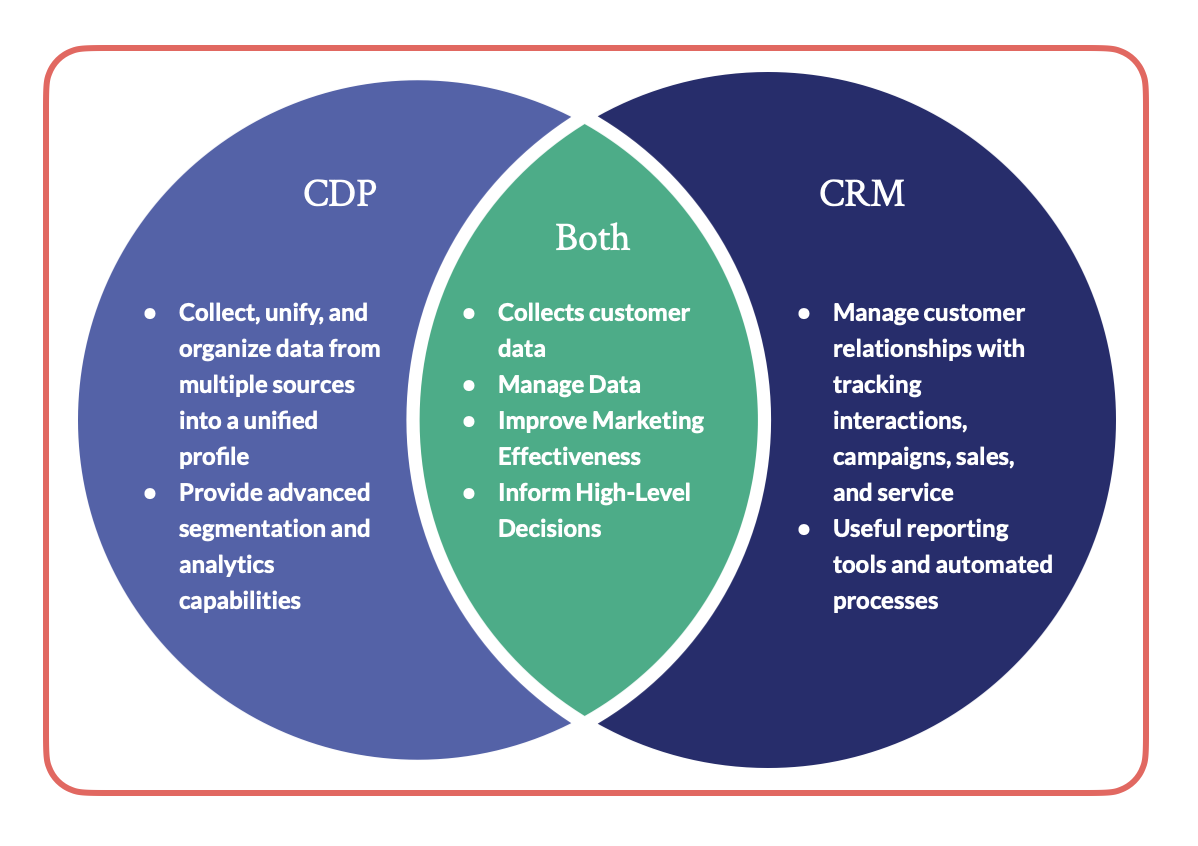EMS Consulting Marketing Cloud Team
Understanding the Difference Between Salesforce Customer Data Platform (Data Cloud) and Other Platforms
Understanding the Difference Between Salesforce Customer Data Platform (Data Cloud) and Other Platforms
Implementing a customer data platform (CDP) is essential in any organization’s digital transformation journey. This platform enables organizations to collect, store, integrate, and analyze customer data from multiple sources in one easy-to-use system.
To successfully implement a CDP / Salesforce Customer Data Cloud, organizations should evaluate a few critical considerations before they begin the process. These include deciding what type of data needs to be collected, determining how that data will be used, and choosing the right technology for integration and analysis.
The Difference Between a CDP and CRM
CDPs and CRM solutions both collect customer data. CDPs help you manage customer data, improve marketing effectiveness, and inform high-level business decisions about customer touchpoints. They generate unified customer profiles and segments that can be shared with other marketing tools in your stack and be used to personalize customer engagements.
CDP (Customer Data Platform) and CRM (Customer Relationship Management) systems are two critical tools for managing customer data in a modern business. They are often confused with one another, but there is an essential difference between them.
CDPs specialize in collecting, unifying, and organizing data from multiple sources into unified profiles about customers. This data can include information such as purchase history, preferences, and website visits. CDPs also provide advanced segmentation and analytics capabilities to help businesses gain insight into trends in their customer base and improve the accuracy of their marketing efforts.
CRMs focus on managing customer relationships by providing tools for tracking interactions, campaigns, sales pipelines, and customer service. This can include features such as contact management, lead tracking, sales forecasting, and automated processes for marketing campaigns. CRMs also provide useful reporting tools to help businesses track the performance of their campaigns and contacts.
In short, CDPs focus on collecting customer data, while CRMs focus on managing relationships. While they are both essential tools for managing customer data, they each have different strengths and should be used to complement one another.
By leveraging the power of both systems, businesses can gain a more comprehensive understanding of their customers and maximize their marketing efforts. This can help companies to create better customer experiences and build stronger customer relationships, leading to increased sales and loyalty.

The Difference Between a CDP and Marketing Automation
The difference between CDPs and marketing automation is that CDPs help collects customer data while marketing automation helps automate repetitive marketing tasks. While both are valuable tools for managing customer data, the two should be combined to maximize the benefits. When shared as robust 360-degree customer profiles, this intelligent data platform can power consistent experiences across an omnichannel customer journey.
In conclusion, CDPs and marketing automation are essential tools for managing customer data. Still, they have different roles and strengths that should be leveraged together for maximum benefit. By combining CDPs with marketing automation, businesses can create better customer experiences, improve campaign performance, and increase sales.

Implement a Customer Data Platform for Immediate Business Improvements
A CDP is necessary if you want to unify your data into a single marketing record and more effectively send personalized messages. To get the most out of your CDP, connections to your CRM and your marketing automation system create the perfect trio. You will no longer be limited in your messaging and ability to provide unique customer experiences.






